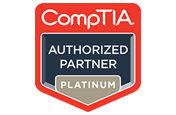We're open through the holidays to support your upskilling goals — Which training do you want to book?
We're open through the holidays to support your upskilling goals — Which training do you want to book?
Unable to find what you're searching for?
We're here to help you find itCompTIA A+ 1101-1102 Course Overview
The CompTIA A+ 1101-1102 course is a comprehensive training program designed to equip learners with foundational IT skills. Covering topics from Mobile devices to networking, Hardware, virtualization, cloud computing, and troubleshooting, the course prepares participants for the CompTIA A+ certification exams. Through hands-on lessons, trainees will learn to install and configure laptops, understand mobile device displays, set up network connectivity, and use various networking tools. They will also dive into Hardware components like RAM and power supplies, explore cloud concepts, and practice resolving Hardware and network issues. This course is essential for anyone looking to start or grow their career in IT, providing the skills and knowledge needed to support and troubleshoot today's technology systems.
Successfully delivered 72 sessions for over 187 professionals
Purchase This Course
USD
View Fees Breakdown
| Flexi Video | 16,449 |
| Official E-coursebook | |
| Exam Voucher (optional) | |
| Hands-On-Labs2 | 4,159 |
| + GST 18% | 4,259 |
|
Total Fees (without exam & Labs) |
22,359 (INR) |
|
Total Fees (with Labs) |
28,359 (INR) |
Select Time
Select Date
| Day | Time |
|---|---|
|
to
|
to |
Suggestion submitted successfully.
Koenig Learning Stack
Inclusions in Koenig's Learning Stack may vary as per policies of OEMs
